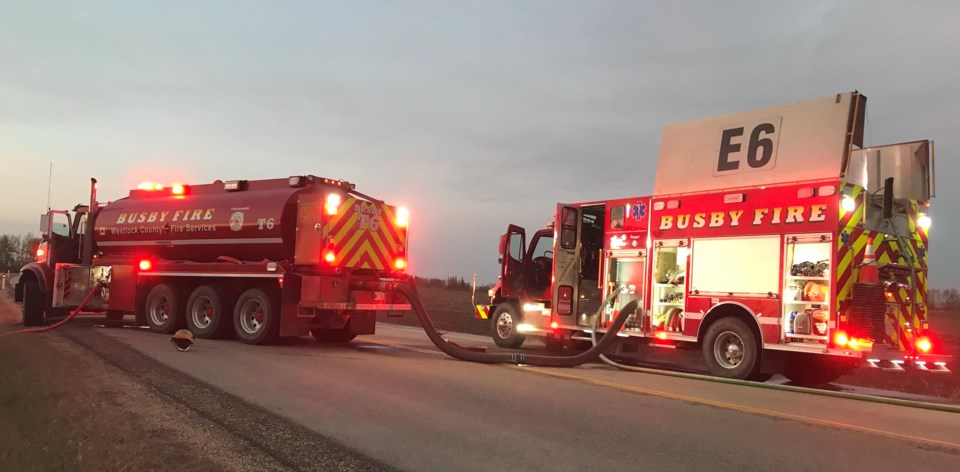WESTLOCK – Westlock County has enacted a new policy that codifies the level of fire and rescue service it provides within its borders.
At their June 20 committee of the whole meeting, councillors got a first look at the eight-page Policy 2300-001, the fire services service level document, and voted 6-0 to accept it as information, then unanimously (7-0) approved an edited version at their regular June 27 meeting.
County manager of protective service John Biro noted June 20 that this was the first time they’ve detailed the minimum level for protective services for the municipality, although it doesn’t “preclude providing a higher level of service if properly trained and equipped members are able to respond.”
Ultimately the document clearly states that county firefighters will respond to structure fires, motor-vehicle collisions, rescue calls, dangerous-goods incidents, disaster response, RCMP requests for help, requests for medical assistance, and all fires within the municipality.
While presenting the document, six other fire-related policies were recommended for deletion with Biro saying, “I’m not sure if they were actually policies to begin with” and noted that portions of those have already been “incorporated into the administration policies.”
“We do have these (service levels) laid out in our bylaw, however, this is just more in-depth and what it actually means,” Biro explained. “This is something that we’ve never had properly (defined). This just provides a better understanding.”
The document notes that the county volunteer fire departments were formed to “assist residents by protecting their health and property” when emergencies arise and that “Westlock County council and administration staff recognize the difficulty in ensuring that a sufficient number of trained volunteer staff be available on a 24-hour basis to respond to every call for assistance received in a safe and timely manner.”
It also says that council, “recognizes that when any emergency response is provided, the service level of that response may differ in various areas” as the geographical size and layout of the municipality includes remote and hard-to-access areas.
Service factors include the availability of a sufficient number of adequately trained volunteer firefighters; supports from other agencies providing emergency services within the region; the availability of water for fire-suppression purposes; adverse weather conditions; and the availability of trained emergency personnel and equipment.
All five of the county’s fire stations, except for Jarvie, are deemed at a “technician level” which means they have enough trained staff and equipment to handle a “variety of incidents.” Jarvie currently has a status of “awareness/operational” which means that when they respond to an incident, they will act to “contain and control” and then “seek assistance from outside agencies equipped to mitigate the incident if required.”
“It outlines the capabilities of what they can actually do. Obviously, Station 2 (Jarvie) doesn’t have an engine to properly pump water,” Biro explained. “Moreso, they’re awareness and operational, so in the case of a structure fire, other aid would be brought to them.”
The document also outlines when equipment will be replaced and the standard it needs to meet, as well as the training level for firefighters who are expected to participate in “ongoing training, pre-fire planning, community outreach and awareness/education activities to develop and maintain their knowledge and skills in these areas.”
“It’s very easy to read, it’s really good. I like the breakdown of what each station can do,” added reeve Christine Wiese.
Nuts and bolts
The document, which will be reviewed every three years, notes the response priorities are firefighter life safety, civilian life safety, incident control, property conservation, and environmental conservation.
For fires, the department will provide structural firefighting and rescue and vehicle fire response up to a “technician level”, while for wildland fire response they go to an “operations level” and for flammable liquid firefighting for small and large spills they go up to an “operations level.”
The departments will provide “technical level” response for motor vehicle collisions and will bill for their services, while for EMS assist and medical co-response, they will provide support up to an “operations level” which includes lift assists, standard first aid and basic life support for ambulance assists and medical co-response for “Echo codes” or for significant ambulance delays.



